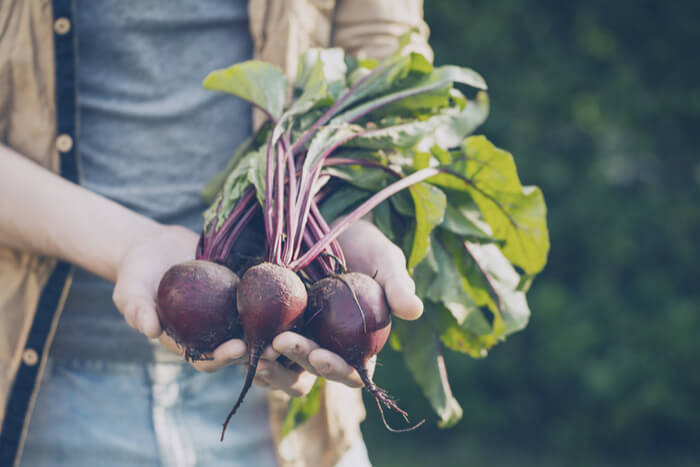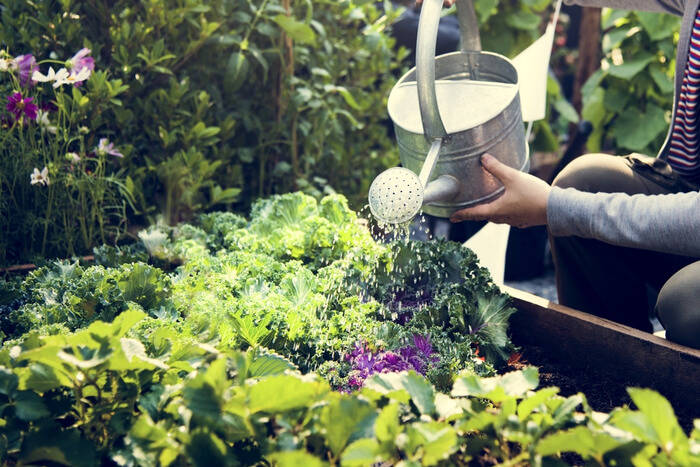Have you always dreamed of canning your own homegrown veggies? Does the sight of your neighbor’s backyard garden make you green with envy? Are you dying to get outside in the dirt, but don’t know where to start? You’re in luck! We’ve put together some of the hottest tips and tricks for how to begin a vegetable garden.

Vegetable Gardens for Beginners
You, like many others are about to get into the awesome world of vegetable gardening. Before we begin, just know this activity is highly rewarding and highly addicting! Once you start, you don’t want to stop! The following are the best ways a beginner can set up their own vegetable garden near their log cabin.
Pick the Perfect Location
There are many factors that go into picking the perfect location for your new edible garden. However, it is extremely important that you have a plan when it comes to where you want your veggies to go. If not, you could end up with a big mess and a lot of wasted money. Here are our top tips for picking out your perfect spot!
- Sun is extremely important. Most vegetables you will be planting require full sun to develop into the delicious edibles they are! This means at least 6 hours, but the general rule is the more sun the better the veg and the greater the harvest.
- Avoid planting in a low-lying area. These are usually prone to flooding when it rains. Although you may not get a ton of rain during your summers, just one flood at the wrong time could wipe out your entire crop if not your entire garden.
- Take wind into account when choosing a location. The less wind your plants have to battle the better!
- Remember, you do not have to choose a location in your backyard. Front yard gardens have become extremely popular in recent years. It may seem a little strange at first, but we guarantee you will be the envy of everyone that drives by!

Choose your Veggies
Now things get real. You must decide on the vegetables you actually want to plant. Some are much easier to take care of than others. Certain varieties can do well in a raised bed or a container. The best way to choose your plants is by taking a few factors into account.
- Think about how much you, your family, and your friends can eat. The point isn’t to grow as many veggies as you can. We still don’t want to waste food, even if it is dirt cheap to grow compared to purchasing.
- Do your research on what vegetables keep producing throughout the year versus the plants that only grow once. Hint: peppers, tomatoes, cucumbers, and squash are some gifts that just keep on giving. Corn and carrots, not so much.
- How much time do you have to tend to your garden? The first year should not be super time consuming, or you may experience burn out. Take some time to research what plants won’t take a ton of time to look after.
- Consider the season. If you are beginning your garden in July, you need to take that into account when picking your plants. This depends on your climate, their hardiness zone, and your own personal tatste in veg.

Start Small
When deciding how big of a garden you want to create your first year, we recommend starting small. If you plan on having a container garden, you won’t need a lot of space to get some tomatoes and green beans growing. You can do this on a deck, balcony, or limited backyard area.
For those that want to create a raised bed or a sunken garden, try to keep the size down to a manageable 10x10 or 10x11-foot bed. Although it can be tempting to go for a 20x20 or even a 25x25-foot bed, you need to resist that temptation your first year. Why? Pests and Disease. The larger your area, the harder it will be to keep your garden’s 2 biggest enemies at bay.
Row Cropping vs. Intensive Cropping
This decision is not only important for timing your planting. It is also a necessity for getting your crops in the ground in the most helpful way possible. There are 2 primary ways you can arrange your layout: row cropping and intensive cropping.
Row cropping is what most people imagine of when they think of a garden. The veggies are planted in a row, single file, with a walkable space in between. This is great for the simple fact you can easily walk between your crops and take inventory, battle weeds, and fight insects. We recommend leaving between 1 and 1½ feet between rows for easy walking and examining.
Intensive cropping is a little different, and not seen as often among beginners. This method allows you to plant your vegetables in a cluster. It can be anywhere from 1 to 5 feet wide, and as long as you see fit. The only downsides are weeding by hand and having to build a raised bed. You should not attempt intensive cropping in a sunken veggie garden.

Plan, Plan, Plan!
We cannot emphasize the importance of planning your log cabin vegetable garden enough! It is extremely important that you have a guide of some sort before you plant your seeds or starts. This is where your drawing skills, or lack thereof, come into play!
Draw a diagram of your garden plan to scale. Then, sketch in the plants as you want them. Make sure to take into account any space you want to leave between rows if you’ve chosen to plant in row croppings. Remember to keep the taller veggies that may block the sun on the northern side of the garden.
Pineca has you covered for all of your garden building needs. Click here to find out more!




